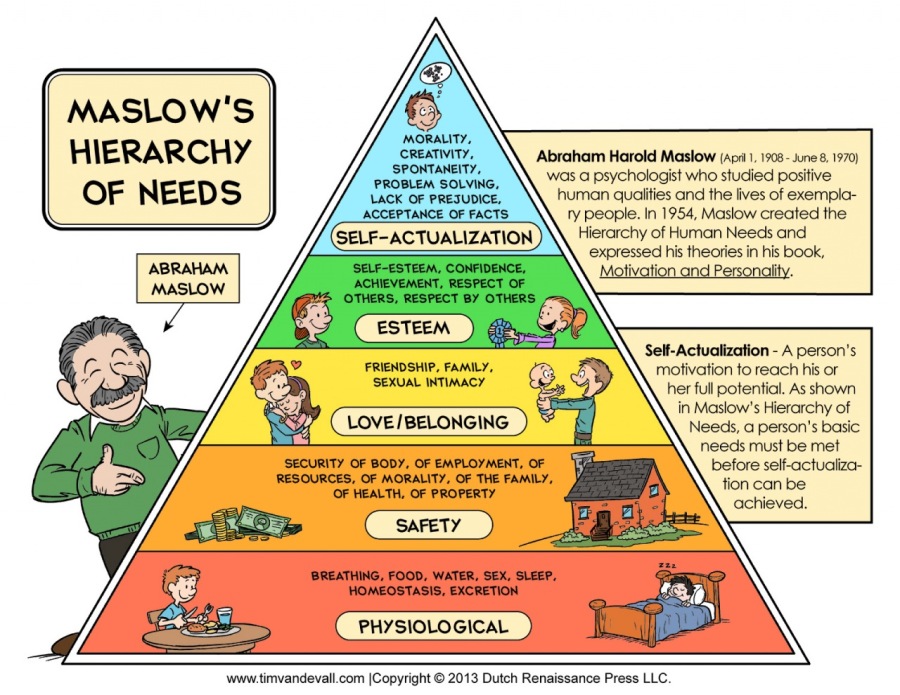Defensive Behaviour ........a small business perspective

Within most of my writings around the subject of leadership, i am always discussing points from a risk perspective. Being defensive is just another communications tactic within any given relationship. But when that relationship needs to perform the risk exists. You need to walk in with eyes open.
Once our defense mechanisms turn on we begin to interpret our environment differently. Keep in mind i am not referring to the all out jump and run. No it's the subtleties. Misinterpreting client intentions or needs, polarizing meeting objectives and the subtle cloud of negative feedback. In most cases we don't even recognize we are within a defensive envelope.
This has lead me to update my current understanding of the subject. We tend to blame our automatic reactions on the area of the brain and the naturalness of the defense itself. Social media tends to promote the concept of personal brands and to be ourselves in our posts. What if our natural responses are based on an outdated narrative that filter our thoughts?

Are we defending our life from a lion or are we defending a position we held on to from our past narrative? Is this narrative still valid?
http://www.theleadershiphub.com/vault/blogs/understanding-defensive-behaviour
“As adults, we have the potential to shift from living in our Self-Protective System, but first, we have to realize that we are living in survival mode.”By: Anne and Heather Dranitsaris, PhD and Dranitsaris-Hilliard
I am not describing our defense mechanisms as a psychosis but like any physiological process we need to seek understanding of its impact on our lives. The defense mechanisms that we use may be part of the “survival mode” that is triggered by a narrative that no longer is relevant. Test it.
Once in defense mode we are unable to access the higher functioning brain accept to aid in defense. Secondarily your defense response will trigger the same in others to varying degrees. Resulting in the degradation of the team efforts. We now have two distinct goals, the original goal, and making everyone feel safe again.
“If you want the Self-Actualizing System of the brain to develop so that you can live your life in the pursuit of your hearts desire, experiencing and dealing with everything life brings to you and achieving your potential, you have to strengthen the neural pathways from your emotional to your rational brain.”
By: Anne and Heather Dranitsaris, PhD and Dranitsaris-Hilliard
Our logical brain is what we need access to just prior to acting on any defensive alarm bells. This is not to diminished our brains alarms in strictly fight or flight, but more so when we logically can assume our safety is not at risk. Given this safety we can initiate a logical reading of our environment and the participants while calculating our response.

Everybody wants something. When you hear a stimulus that draws your defense, understand what the stimulus wants, Ignore the three alarm defense response until you fully understand.
Take a few seconds and come up with two separate meanings of the stimulus you encounter. They should be counter to your automatic response. If they make sense go with one of them, if not blast away.
Restate why you are involved in the first place. It’s usually best to prepare your mind for a meeting by stating the three objectives of the meeting. Values to be honored, empowering others, meeting objectives. Using these as filters, we can channel our auto response.
Reflective questions. Come again? What? and similar questions are defensive. Find new ones. We need folks to talk so we can fully understand. Using the above statements sets them into defensive mode. Next time try, Please help me/us understand how (Repeat statement) will help us achieve our objective? Or come up with your own go to statement.
The right to be defensive is yours. No one can take it from you or give it to you. You have the ability to determine when to show. Once your defenses have been challenged, your response can still be valid in ten minutes as it was in the first three seconds.
This will be a very mechanical operation at first. Your facial expressions will note your defensiveness. But your words will be focused on meeting objectives. Overtime your facial expressions will match your words as you internalize the process.
Keep in mind that auto responses that show up internally show up externally. Are your customers experiencing defensiveness instead of solutions?
"""
Articles from Harvey Lloyd
View blog
A picture can show us many things and conjure up different emotions. · I used to pass a graveyard e ...

Image credit · http://www.incourage.me/2013/07/love-in-the-dark.html · From my desk i see students w ...

Photo Credit raramsey.com · The workplace is increasingly becoming an extension of who we are within ...
Related professionals
You may be interested in these jobs
-
Field Services Engineer
Found in: beBee S2 US - 2 weeks ago
ANDRITZ AG Alpharetta, United StatesEvery day, ANDRITZ continues to deliver successful innovative solutions to our customers globally. Why are we so successful? Because we are passionate and love what we do We are at the forefront of future engineering technologies, with solutions that ensure the success of our cli ...
-
Food Delivery Driver
Found in: One Red Cent US C2 - 1 week ago
Pizza Hut Four Seasons Chesterfield, United StatesPizza Hut Four Seasons is looking for a full time or part time Food Delivery Driver for our location in Chesterfield, MO. The Food Delivery Driver will ensure the correct order makes it from our location to the customer in a timely manner. Customer service is important since you ...
-

Personal Home Health Aide
Found in: Talent US 2A C2 - 2 days ago
FirstLight Home Care Cedar Grove, United States Full time, Part timeAt FirstLight Home Care, we're committed to empowering adults to age with comfort, dignity, and independence in the sanctuary of their own homes. Our mission is clear: to ensure every individual we serve experiences their best day, every day. Join us in this noble endeavor by bec ...


Comments
Harvey Lloyd
7 years ago #14
If i could get my team (Including me) to fully understand this single statement in real time "No one ever hits it perfect every time. ;)" defensiveness would go away. But then they would be my competitors. So it becomes a circular argument, that is...... life.
Harvey Lloyd
7 years ago #13
"investigative response" The post was a primer on this very stute phrase. When meeting defensive responses we do need to investigate. Thanks for your perspective it was helpful. Our words are the only tools we have, choose wisely.
Harvey Lloyd
7 years ago #12
I really dont wont to get into the specific personal issues within the dynamic. But think i can explain from the post the growth into leadership perspective. When we don't know something or our education or self confidence is challenged we tend to defend the current way of doing things. A four year degree may walk into a room with a bunch of PHD's in your profession and be intimidated or another emotional reaction. Your presentation may appear defensive to the others. Ours is a change to a more media centric communications style. Enhancing our relationship with our customer through media engagement. It requires us to get outside of our normal ways of communications and be intentional, not conversational. This is challenging for our team of professionals. Engagement through knowledge is one thing but engagement through understanding motivations and supporting them is quite another. I appreciate your inquiry and do enjoy different perspectives. I can get a in a box sometimes. Also defensiveness is a broad topic that would require a series of posts to discuss the nuances of their creation and acceptance into our identity.
Lyon Brave
7 years ago #11
Harvey Lloyd
7 years ago #10
"It takes intent and work on a daily basis" The intent cant begin until you recognize the behavior exists. In my growth as a leader and company i have discovered in myself and in team members we operate until we become uncomfortable or challenged. Once there, we can become defensive of past behaviors or we can self analysis where we are and what is needed to grow out. The question is usually not about defend, but how long do you dwell there? Sounds simple from the outside looking in, but i think we have all been and will be at certain growth areas where we need to re-access our behaviors.
Harvey Lloyd
7 years ago #9
I wish it were a please thing, these are typically easy to lead. No, its a personal growth thing. We are asking professionals of various fields to develop in areas they were not educated within. This is the plight of small business, everyone needs to wear different hats. I am always uncomfortable with bending ones training in new directions and utilizing HR tactics to bring them along. I enjoy growing folks and sharing the journey. Thanks for your comment and have been where you discussed, in my earlier years i sought relationships and understood that with this, leadership would be easy. That was a school of hard knocks journey.
Harvey Lloyd
7 years ago #8
Thanks for the comments and you clearly broadened the discussion out to include leadership styles. Leadership styles are an important aspect of change management and what triggers discussion about which style, is what the leader experiences within the feedback loop. When i sense feedback that is defensive i realize that i may have assumed a few things that i shouldn't and now and individual may become defensive. Intentions are often misinterpreted. We have two opportunities for this to self correct. The leader recognizes and adjusts or the team member seeks understanding. The best direction is always from the team member. It shows the leader that courage and responsibility exists within the member.
Harvey Lloyd
7 years ago #7
Max thanks for your comment and i agree it does take two sides to create a defensive position. Within change management you are moving perspectives along with goals. I would like to say that you hit it perfect each time but this is not the case. Time constraints and possibly emotional laziness you step through some aspects without thinking about the impact on others. Defensiveness is a misinterpretation of events or a natural response to attack, if i may borrow your word. We have moved past the attack style of leadership. But we are in the midst of realigning our communications style. The post was more an awareness initiator. Your comments expose other elements of the process.
Devesh 🐝 Bhatt
7 years ago #6
or maybe time constraints are the exact tool to manipulate others to function as we please, haste doesn't permit them to evaluate. Soon, by the time they move under good management they have this defensive mechanism which refuses to work without sufficient data even when the data constraint is genuine. The outdated narrative is not as outdated. An example, as an employee I could have been handed the entire information to function right away, but I was made to do the each step without the inputs for the subsequent running, I did not mind the extra running but I certainly felt cheated because many unethical acts were done by my hand repeatedly which were revealed as unethical after seeing the big picture. I was adviced to apply the tactic of evasion and reversing the time constraint on the boss who would have to yield information for action or else find another resource. A few years down the line I realised the shrewd employer and employees had found new subjects to exploit in different companies , teaching each other the art of manipulation.
Devesh 🐝 Bhatt
7 years ago #5
180 degrees from the objective with subtle tactics of opposition. Yet the defensive mechanism is rooted in perceived threats or a tough stand because they don't want to attach hope to the negotiables Now if we look at the threat,, the recession into the childhood narrative seems like a generalisation because it has specific triggers of Social conditioning or much worse traumatic corelations. The real constraint here is not convincing them, but convincing them to change the stance within the given time constraints, it always is. What we need to understand are the triggers of motivation that may distract them from their own tactics. They are thinking risk, reward and responsibility and the scope for error in the intangibles, all factor heavily in a small business, specially for leaders. What makes people vulnerable and get defensive - the answer vests in the people, the diagnosis maybe worked as per mentioned frameworks but the actual application requires decision making experience that you already have.. Aligning your method with this theory for replication may not yield a desirable result...instead if you could divulge how you would solve the problem, it can be traced back and linked to behaviour I business problems including the common ailments across all businesses.
Harvey Lloyd
7 years ago #4
Sounds like you have been down this road a few times.
Harvey Lloyd
7 years ago #3
#4 The post should represent a skill set of dealing with defensive people or finding yourself in a defensive position. Defensive conversations are like a centerfuge they become concentrated and focused 180 degrees from the objective. We should have strategies that allow us to recover back to the objective.
Devesh 🐝 Bhatt
7 years ago #2
Devesh 🐝 Bhatt
7 years ago #1